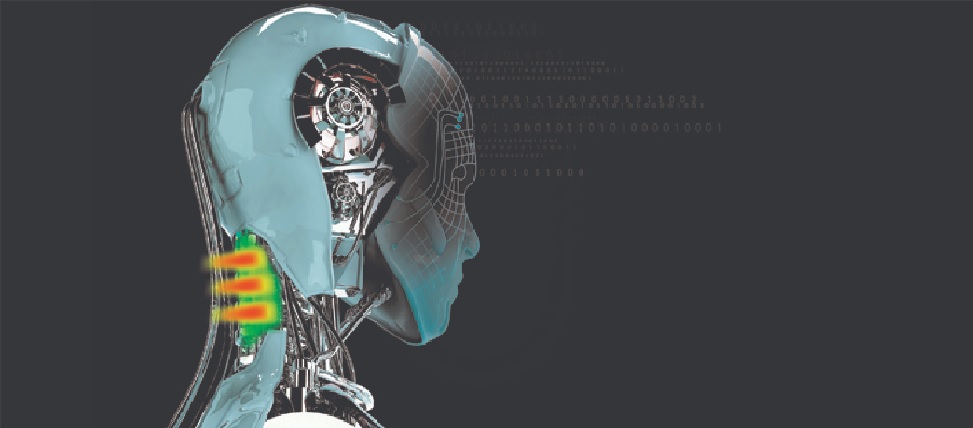Intelligent Performance Engineering – understanding multiphysics simulation – ep. 2 Transcript

The machinery industry has radically changed over the last decade, requiring more sophisticated machines. To stay competitive in this landscape, machine builders need highly intuitive software like Intelligent Performance Engineering (IPE), which allows industrial machinery companies to provide validation and analysis practices in the field. The following podcast transcript discusses IPE’s approach to address these modern, complex machines.
In this second podcast of the IPE series, we are joined again by Rahul Garg and Giulio Camauli.
Read the transcript
Bill Butcher: Hello everyone, and welcome back to Siemens Digital Industries Software’s podcast series on Intelligent Performance Engineering. I’d like to welcome back our two guests, Rahul Garg and Giulio Camauli. As you may recall, Rahul is the Industry Leader for Siemens Industrial Machinery Industry. Giulio is the Industrial Machinery Industry Leader for the Simulation and Test Solutions within Siemens Digital Industries Software. Both Rahul and Giulio have over 30 years of experience, respectively, and Gentlemen, thank you again for joining me one more time on this series.

In our last podcast, we talked about technology’s evolution within the machinery industry and the key trends that continue to shape the industry today. We also introduced the intelligent performance engineering solution at a high level where Rahul brought up the three key differentiators and let me see if I can capture them correctly. First is Multiphysics simulation, and Rahul discussed balancing multi-attribute engineering to bring a wide range of physics and disciplines together under one umbrella. You also referenced integrated design and simulation, which allows you to design to commission and beyond. Designers and simulations can use the same models in one system and keep that simulation data in sync. And you also referenced closed-loop validation, where we’re able to validate simulations by capturing and testing the relationship between requirements, functional layout, logical implementation, and physical implementation. So, in this session, I’d like to take a deeper dive into the conversation on one of the differentiators, Multiphysics simulation. For our audience, Giulio, what exactly is Multiphysics simulation, and how has it been integrated into the industrial machinery industry?

Giulio Camauli: Yes, Bill. So, we have to say that as new materials and methods of manufacturing are being implemented, products are becoming more complex. The products must be lighter and smaller and work harder than ever, that is the requirements that we receive from the people, receive from customers, from the market. And Multiphysics simulations let you explore all the real reward physical interaction that a complex product may encounter during cues. This interaction can impact product performance, safety, and last but not least, longevity. Fluid forces, thermal effects, structural integrity, and electromagnetic radiation can all affect the performance. If you isolate these forces and examine them separately, you might not get an accurate prediction of product behavior; you have to consider all those loads simultaneously during that real usage simulation.
Bill Butcher: So, Giulio, staying with you now. We frequently hear how factories and plants worldwide are looking at how digital transformation can help them innovate in response to changing customer demands. The adoption of new technologies, we talked about that in the first podcast series. So, let’s talk a little bit more about the current validation and analysis practices that you’re seeing in the field today. Can you elaborate on how machinery is approaching this?
Giulio Camauli: Yes, we must consider that one of the most critical aspects of designing new industrial equipment or modifying an existing design lies in verifying and validating how it will perform before it reaches the customer. It costs significantly less to fix the problem found when it is being designed than later in the product development cycle. So, the industrial OEMs have adopted a collection of digital simulation and analysis tools used to understand our design choices affect the performance and failure modes for a component, a device, or the complete machine. In the traditional approach, there are manual handoffs between design and simulation processes. Designers can often use design-level simulation to provide a baseline assessment of a design as to whether it is definitive or needs more advanced simulation. As equipment manufacturers try to deliver a machine with faster cycle rates and delivery schedules are being compressed, teams feel pressured to do more simulation upfront rather than test many physical prototypes and assume the physical tests are sufficient. So, the answer, in my opinion, is that simulation and the physical examination must work together efficiently.
Bill Butcher: Okay., that’s a great point. And Rahul seems that what Giulio mentioned was at the power errors and increasing these interdependencies between multiple forces, which was often a more accurate prediction of part or machine behavior. As Giulio said, this could be the effect of heat generation while the machine is operating and the subsequent vibrations resulting from this heat displacement. What are some additional benefits of Multiphysics simulation that you see for the machinery industry?
Rahul Garg: Yeah. So, the Multiphysics simulation allows for a couple of things. First, it takes away or reduces the need for testing and physical prototyping, so it helps you improve the overall speed for delivery. And as this higher fidelity modeling gets more integrated into your business, it allows for better collaboration between the experts. So, one of the things that happen is each expert is looking at their domain, and now with Multiphysics simulation, we can get them all together. Because at the end of the day, the machine is just not working under one environment, it’s working across all the domains simultaneously. Hence, it would help if you thought about that same environment simultaneously as well. So, this is what Multiphysics allows you to do, is to bring all the relevant experts together as well, to make sure that you can address the end-customer needs and the situations that may be coming out.
Bill Butcher: So, in this collaboration – is how I’m taking the phrase that you just said – this isn’t necessarily solely defined to the actual manufacturing environment where it can be much bigger. We can talk about the context of how Multiphysics simulation helps OEMs and their broader supplier network connect and potentially act smarter. Can you talk a little bit about that and how this solution can help with that ecosystem and that collaboration?
Rahul Garg: one of the things that arise is as these comprehensive digital twins get built out, and you’re looking at small components, or the entire machine itself, each of those has to be evaluated for their specific characteristics. Usually, a supplier provides these components, but when you bring that component into a machine, it must work together in the context of the entire machine. So, collaboration becomes more critical when you’re trying to work across your organization and company. This improved integration between the designers, analysts, and live data can enable OEMs to adopt better analysis practices and improve performance while ensuring safety, reliability, and virtually the machine’s cost-effectiveness.
Bill Butcher: To take what Rahul just talked about a little bit, I’m going to go back to the term I think we keep using this in this series, which is the digitalization of the digital twin. And it’s not just the data that is connected, it’s also the collaboration that Rahul mentioned between multiple teams and disciplines, and you alluded to that. So, how does intelligence performance engineering leverage Multiphysics simulation to do this? Could you be a little more specific on the technology itself? We talked about how the process works, but how does the technology do this?
Giulio Camauli: Multi-domain collaboration in simulation, ABS finds, the LT compromises between very often concurrent performance. Just consider an example, each roller that imposes a pattern and fabric or paper may be subject to thermal contact and rotational forces. The beatings might suffer disasters problem if validation only considers contact stress but ignore thermal load. A better approach is to find a tool where each issue can be set up on its own, and the results of those analyses can be fed back as input to the next. So, by circulating the thousands of possible solutions with minimum modification to the physical geometry, the best solution can be reached that satisfies the fabric’s thermal needs bearing life and vibration, all at once.
Bill Butcher: That sounds like a potentially very problematic idea. So, Rahul, I mean, it took that a little further. Did you have any examples of customers that have embraced this intelligence performance engineering strategy or implemented Multiphysics simulation? And if so, what types of increases in efficiency were able to achieve?
Rahul Garg: one of the customers I can think of is Picanol; they’re the world leader in textile manufacturing machines. They make some of the best weaving machines for all of the fabric we wear and use in our daily lives. Their machines are highly complex; they are trying to address many different needs. As you can imagine, fabrics are not just made of our traditional material of cotton or something; it goes on to silk, jute bags, fiberglass material draperies, upholsteries, car seats. So, it has varying levels of needs from end customers, and these machines need to be compliant enough to those end-customer needs, both in terms of what it can perform, but at the highest possible speeds and other requirements may have. So, in this situation, as part of the whole weaving machine, they must make sure that the structural integrity, vibration, and thermal concentrations are well maintained. Fabric behaves differently under different vibration, and thermal conditions and the mechanics must be very well managed. There are very high kinetic forces and very high-speed movement to deliver the fabric that we need. So, these are some of the challenges that they are facing. And Multiphysics gave them the ability to determine how best to reduce a lot of these challenges, both in addressing the speed needs, addressing the thermal needs, and addressing the vibration needs by using many of our capabilities. Econo was able to enhance their reading productivity by over 15%, get a significant reduction in the noise and vibration, develop some new techniques of him, and create the driver mechanisms for the machines. Increase the parts’ fatigue life, repair parts, and then eliminate many prototypes that they would have had to build if they haven’t had this ability to have these Multiphysics simulation capabilities.
Bill Butcher: It’s a great example, and I think it highlights the interdependencies that we talked about and the corresponding benefits when simulated accurately. That’s a fantastic example Rahul, thank you. For our listeners, as you can tell from what we talked about today, it’s an intimidating mission to design, validate and manage modern manufacturing and assembly operations without looking at these interdependencies that we talked about between structural vibration and thermal considerations. So, I would like to thank both Rahul and Giulio for speaking with me today and sharing their insights on Multiphysics simulation and the intelligence performance engineering solution. And I hope you will all join me again as we continue to review the solution itself and continuing our discussion. In our next podcast, we’ll take a deeper dive into the topic of integrated design and simulation as we’re looking to design commissioning and beyond.
Siemens Digital Industries Software drives the transformation to enable a digital enterprise where engineering, manufacturing and electronics design meet tomorrow.
Xcelerator, the comprehensive and integrated portfolio of software and services from Siemens Digital Industries Software, helps companies of all sizes create and leverage a comprehensive digital twin that provides organizations with new insights, opportunities and automation levels to drive innovation.
Listen to podcast01, podcast02, podcast03 and podcast04 from the IPE series.
Also, for more information on Siemens Digital Industries Software products and services, visit siemens.com/software or follow us on LinkedIn, Twitter, Facebook and Instagram.
Siemens Digital Industries Software – where today meets tomorrow.
About our experts:
Giulio Camauli – Simcenter Industry Solutions Manager at Siemens Digital Industries Software. Giulio has been with Siemens almost 30 years, covering many roles from application engineer for test solutions, to customer services manager responsible for strategic initiatives dealing with several key-customers in the Italian market. In his current role he contributes to the Industry campaigns and strongly collaborates with the different Simcenter sub-segments, marketing and regions to define broad and balanced Simcenter messaging and promotion.
Rahul Garg is the Vice President for Industrial Machinery & SMB Program, responsible for defining and delivering key strategic initiatives and solutions and global business development. He and his team are responsible for identifying key initiatives and developing solutions for the industry while working closely with industry leading customers and providing thought leadership on new and emerging issues faced by the machinery industry. Rahul’s experience and insight are derived from 25 year career delivering software-based solutions for product engineering and manufacturing innovation for the global manufacturing industry, spanning a career in R&D to program management, sales and P&L management and having focused exclusively on the industrial machinery and heavy equipment industry since 2007.


